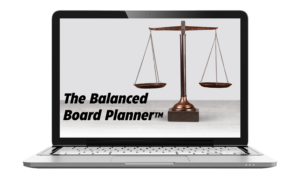At every organization, change is one of the only constants. Whether due to retirement, unexpected departures, or internal promotions, people inevitably leave organizations. Without a plan in place to manage these transitions, organizations are left vulnerable while trying to fill key roles. This is where management succession planning becomes crucial. It can no longer be just a “nice-to-have” thing. Now management succession planning needs to be a strategic priority for any organization looking to ensure its longevity and stability.
In this comprehensive guide, we will explore why management succession planning is essential, the key benefits it offers, and the steps your organization can take to implement an effective succession plan.
1. What is Management Succession Planning?
Management succession planning is the process of identifying and developing internal individuals who have the potential to fill key leadership positions within an organization. It ensures that the correct individuals are being developed and are prepared to step into leadership roles when needed, minimizing disruption to company operations.
It is important to know that succession planning isn’t limited only to top-level executives; it encompasses middle management and key operational roles as well. At its core, succession planning is about creating a bench of talent that can step in seamlessly and continue driving the organization forward when needed.
2. Why Your Organization Needs Succession Planning
a. Ensuring Organizational Continuity
When a key leader leaves the organization, that can create chaos and uncertainty – especially if you are not planning for it. Companies often react hastily if they do not have a formal succession plan. This includes promoting individuals who may not be fully prepared for the role. Or, they have to spend time and money hiring externally for the position. This reactive approach to turnover can lead to poor decision-making and disrupted operations.
Having a well-thought-out management succession plan will ensure that future transitions will be smooth, with developed individuals ready to step into the role when needed. This guarantees business continuity and safeguards the company’s operations, culture, and reputation.
b. Fostering Talent Development and Employee Engagement
Succession planning doesn’t just prepare individuals to take on leadership roles; it actively encourages their professional development. When employees know there’s a path to advancement, they are more likely to invest in their growth within the organization and seek out opportunities for learning. This creates a culture of continuous improvement, where individuals are motivated to expand their skill sets and take on greater responsibilities, benefiting both themselves and the organization as a whole.
Succession planning also enhances employee engagement, since they are committed to their professional development. Engaged employees are more productive, committed, and aligned with the company’s mission and vision. By investing in succession planning, you create an environment where employees feel supported and motivated.
c. Mitigating Risk
As we mentioned earlier, unexpected departures can pose significant risks to an organization. Leadership gaps, especially in key roles, can disrupt decision-making, delay important projects, and lower team morale. One function of a succession plan can be to act as a risk mitigation strategy. By having proper bench strength, you will have trained and developed individuals ready to step into leadership roles when needed. If this is done properly, the organization is better prepared to handle unforeseen changes without compromising performance.
3. Key Components of an Effective Succession Plan
To implement a successful management succession plan, organizations must focus on the following key components:
a. Selecting Key Competencies
First, it is important to select the key competencies needed for success in each role. These competencies should reflect the skills, behaviors, and knowledge that are essential for driving your organization’s long-term goals. By clearly defining these competencies, you establish a framework for evaluating and developing potential leaders. This foundation is crucial for ensuring that individuals are not only capable of meeting the demands of their current role but also prepared to grow into future leadership positions.
b. Assessing Talent and Selecting Potential Successors
Once you have selected the key competencies for each role, the next step is to assess the current talent pool within the organization and select the appropriate potential successors. This step involves evaluating each potential successor on the competencies, their leadership potential, and their readiness to step into larger roles. Using tools such as 360-degree feedback and leadership assessments can provide valuable insights into where these potential successors need to develop and who is best suited for future leadership roles.
c. Developing Future Leaders
Succession planning isn’t just about identifying potential leaders; it’s mainly about developing them. This requires a comprehensive development plan tailored to each individual’s needs. Some examples of opportunities for growth may include formal leadership training, mentorship programs, stretch assignments, and cross-functional projects. By offering employees a variety of learning opportunities, organizations can ensure they are developing well-rounded leaders who are ready to take on key roles when the time comes.
d. Communicating the Plan
Being transparent is the key to the success of a succession plan. Potential successors need to understand that the organization is invested in their growth and that there are opportunities for development/advancement. Regular communication about succession plans fosters trust and encourages employees to actively participate in their own development.
e. Monitoring and Adapting
Succession planning should not be a one-time event; it needs to be an ongoing process. You need to regularly review the succession plan, make adjustments as the organization evolves, and reassess talent development programs to ensure they are aligned with the company’s long-term goals.
Monitoring the progress of potential successors’ development, offering ongoing feedback, and making necessary adjustments ensures that the succession plan remains relevant and effective over time.
4. Common Challenges and How to Overcome Them
Despite its importance, many organizations face challenges when trying to implement succession planning. Here are some common obstacles and ways to overcome them:
a. Resistance to Change
Some leaders and employees may be resistant to the idea of succession planning, either out of fear of change or a desire to hold on to power. To overcome this, leadership must emphasize the strategic importance of succession planning and how it greatly benefits the organization in the future.
b. Unclear Criteria for Leadership
Without clear criteria for what makes a good leader, succession planning can become subjective and ineffective. It’s essential to establish objective criteria based on the company’s values, goals, and leadership competencies to ensure the right individuals are being considered as potential successors and then developed.
c. Lack of Resources
Organizations may feel they lack the resources to create a comprehensive succession plan. However, there are software solutions, such as SUCCESSIONapp®, designed to streamline the process and make it more accessible. These tools help you complete the entire succession planning process – efficiently identifying key roles, assessing your talent pool, and building a robust pipeline of future leaders. With the right solution, succession planning becomes a manageable and strategic investment that reduces risks and strengthens organizational stability.
5. Conclusion: Start Planning Today
The need for management succession planning is clear. Organizations that invest in preparing for future leadership transitions ensure business continuity and maintain their competitive edge. Succession planning also boosts employee morale, reduces turnover, and fosters a culture of continuous growth.
The key is to start planning now! Whether you’re a small business or a large corporation, management succession planning should be a priority. By identifying critical roles, selecting key competencies, developing future leaders, and maintaining an adaptable plan, your organization can confidently face the future, no matter what changes lie ahead.



